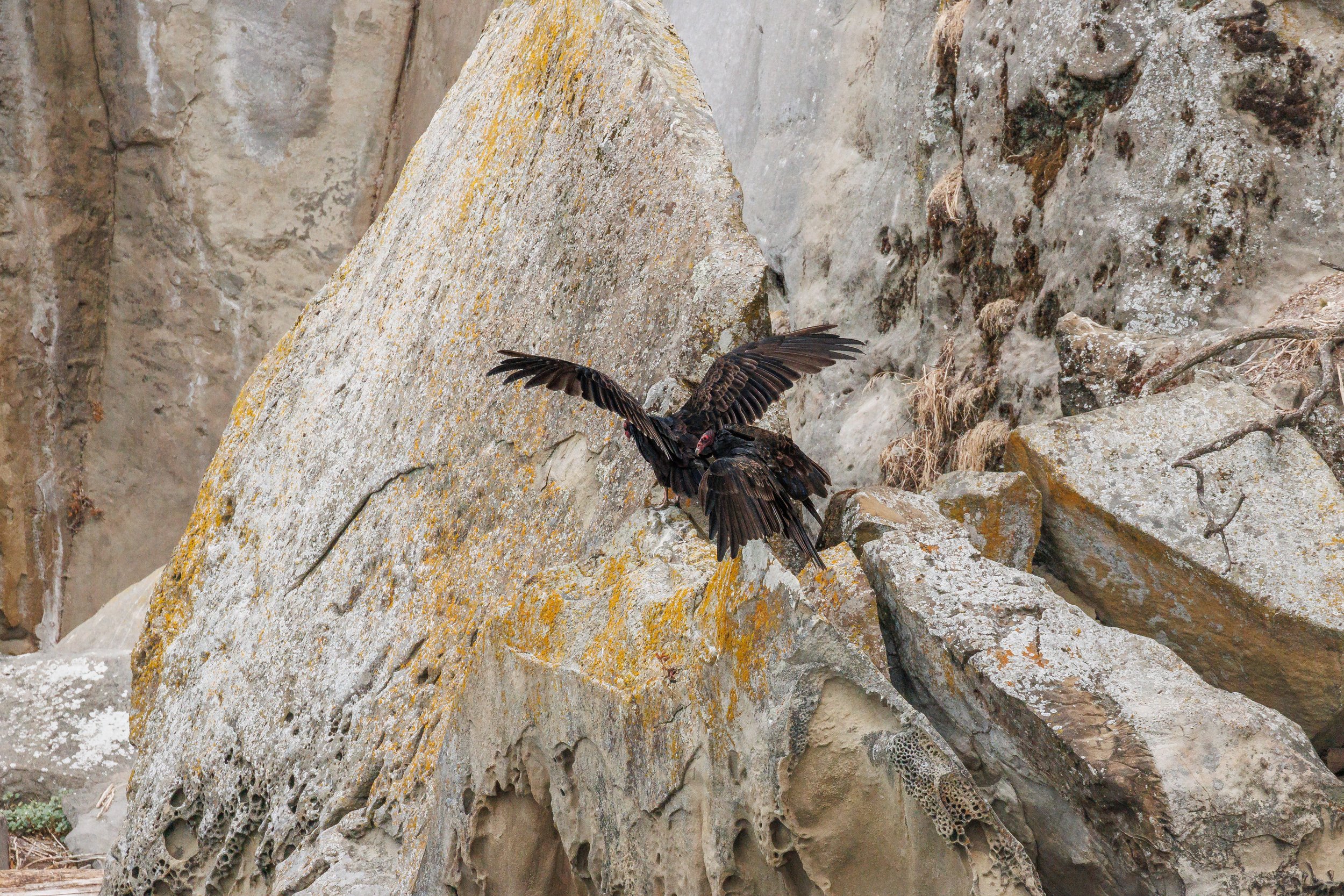August 20, 2023, 10:30 AM - A delightful duo of Humpbacks
The morning of August 20th we headed out of the Nanaimo Harbour, into the Southern Gulf Islands, to see what we would be able to find today! The search started by taking us through Dodd Narrows, a narrow passageway that transients between Mudge island and Vancouver island. This passageway is only about 80m across and deep, meaning that when large volumes of water have to pass through it, it picks up a lot of speed. The currents produced here make it a biodiversity hotspot, since all those currents create an influx of oxygen and exchange it all throughout the water column. This makes the area suitable for species that are usually only found on the coastline with open ocean and rocky shores, since the wave action would be doing this same action of oxygen introduction. At low tide you can find things like Gooseneck Barnacles, Surf Anemones, and large congregations of the huge California Mussels.
Since Dodd is one of only two northern exists from the Southern Gulf Islands it can also be a common place to whale watch from shore, as they get funnelled in closer to shore, giving people on the shoreline a good view. There weren’t any whales here today, but we did see lots of hikers on the banks enjoying their day.
We continued south and then east until we spotted something in the distance. it was blows! Usually spotting these blows from larger distances means that it’s a humpback whale you have been lucky enough to come across, but you ever know until you start to see the dark bodies rising out of the water. If there is a large black dorsal fin amoungst the blows it is an orca, if the dorsal fin is instead smaller and less pronounced, you’ve got yourself a humpback whale. We saw the smaller, rounded dorsal fin and eventual 20 foot wide tails lift out of the water to confirm our suspicions, it was a humpback whale! As we got closer there was even another surprise, two humpback whales associating together!
Since these two were doing higher flukes pretty consistently, it didn’t take long before we were able to figure out who we were looking at: Stripe (BCZ0004) and MMX0306!
The designation “MM” is an indicator of an unknown whale first identified by one of the local Humpback Whale Cataloguing organizations: Humpback Whales of the Salish Sea! The BC number that Stripe has is the official BC designation which is assigned in collaboration with DFO.
These two whales were travelling nice and close together, matching pace and surfacing/diving together. This is becoming more and more common as time goes on. The humpbacks who used to be thought of as solitary creatures are almost never travelling by themselves anymore. We aren’t exactly sure why they associate like this, but it’s clear that they are much more social animals than we had previously given them credit for.
Getting to see them on our tours is amazing, since it wasn’t too long ago that the last of them were whaled in our area, making them locally extinct. As more time goes on hopefully they will keep recovering and getting back to historical abundances!
After the whales we got to see another population that was once heavily reduced by human intervention, the Harbour Seals! These little guys went from being culled by humans, to be protected by the Marine Mammal Protection Act, and now they are finally back at the Carrying Capacity of their population! They have returned to historical population levels, and hopefully will stay healthy as they are important members of the ecosystem with their predatory behaviours, as well as being prey for many species.
Getting to see all of these animals basically in our own backyard was absolutely amazing and we are so lucky to get to operate here!
All the wildlife we saw during our tour, as well as the photos of Stripe and MMX0306, can all be viewed below. Photos by Marine Naturalists Vanessa Vereschahen, Aly Kohlman, and Carmen Murphy.
You can see MMX0306’s dorsal fin and they prepare to dive. Photo by Vanessa Vereschahen.
MMX0306 lifting their tail to dive. Photo by Vanessa Vereschahen.
Stripe doing a sideways fluke at the surface. Photo by Vanessa Vereschahen.
Stripe’s dorsal fin. Notice the difference between Strike and MMX0306? Photo by Vanessa Vereschahen.
Stripe lifting their tail to dive. Photo by Vanessa Vereschahen.
MMX0306 doing an awkward tail lift. Photo by Vanessa Vereschahen.
MMX0306 creating a fluke waterfall. Photo by Vanessa Vereschahen.
Stripe arching their back to dive under the surface. Photo by Vanessa Vereschahen.
Stripe surfacing with Gabriola Island in the background. Photo by Aly Kohlman.
The underside of MMX0306’s fluke. This is what we use to ID them. Photo by Aly Kohlman.
The underside of Stripe’s tail flukes. Photo by Aly Kohlman.
Harbour Seals hauled out on the rocks. Photo by Aly Kohlman.
Steller Sea lions fighting on Stinky Rocks. Photo by Vanessa Vereschahen.
These two are having a much calmer experience for now. Photo by Vanessa Vereschahen.
This shows how much mobility the Stellar Sea Lions have with their rotating flippers. Photo by Aly Kohlman.
A Bald Eagle watching us from an Arbutus Tree. Photo by Vanessa Vereschahen.
A Turkey Vulture doing a fly by. Photo by Vanessa Vereschahen.
Turkey Vultures waiting for their next meal. Photo by Vanessa Vereschahen.
A Harlequin Duck getting cozy in the breeze.
A Juvenile Gull. Photo by Vanessa Vereschahen.
Some birds on the Bluffs! A pelagic cormorant on the left, and a gull on the right. Photo by Vanessa Vereschahen.
A bunch of young cormorants perched on the bluffs. Photo by Vanessa Vereschahen.
The Gabriola Bluffs. Photo by Carmen Murphy.























